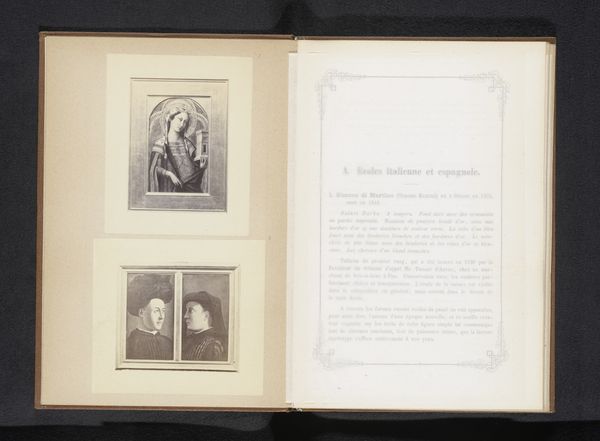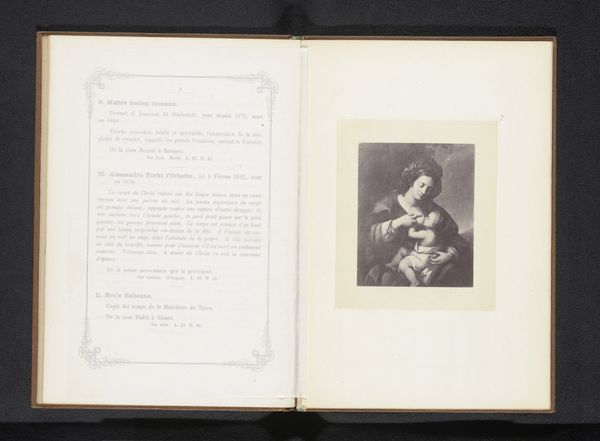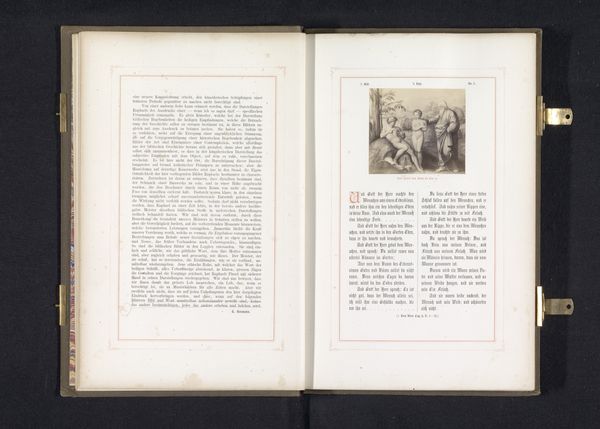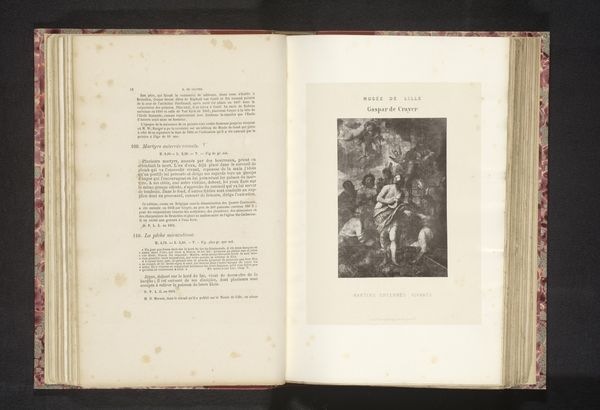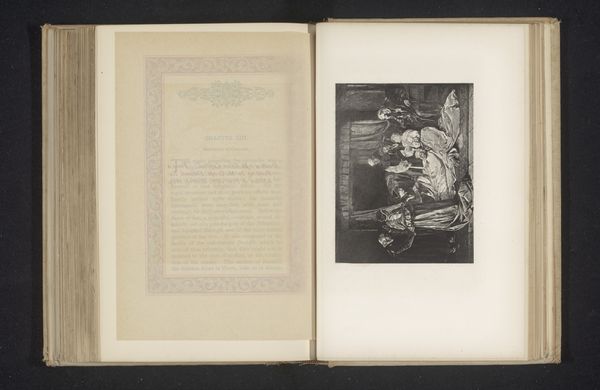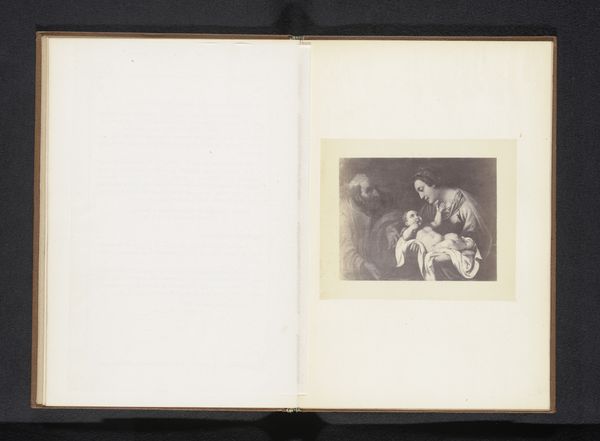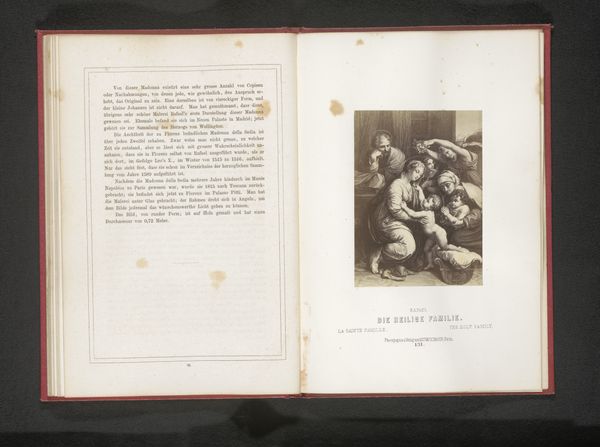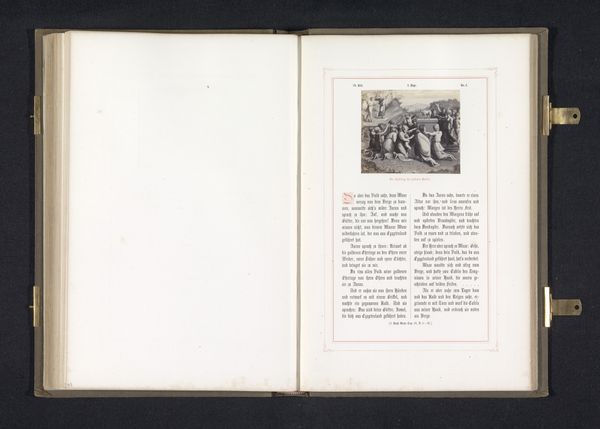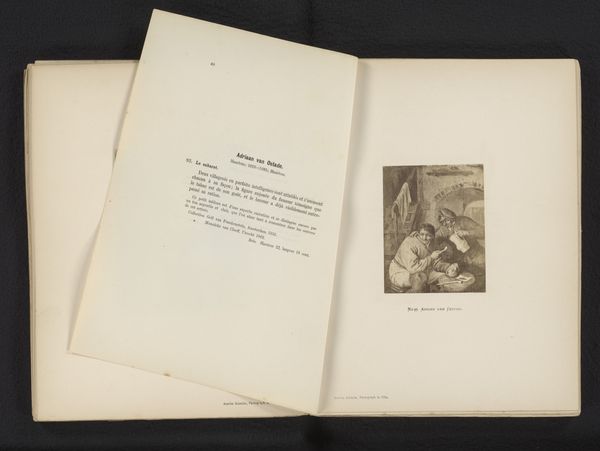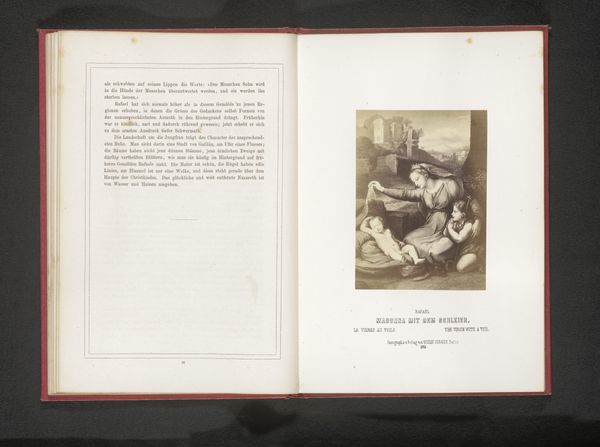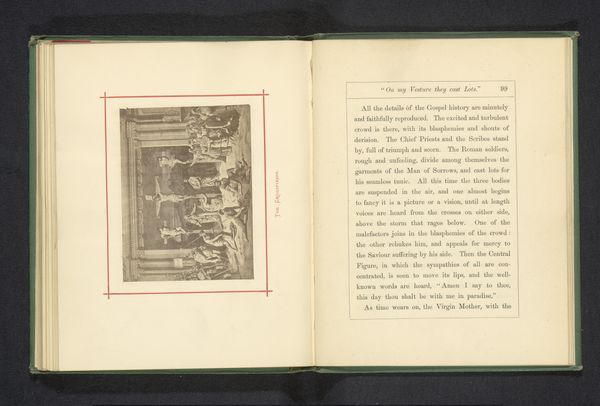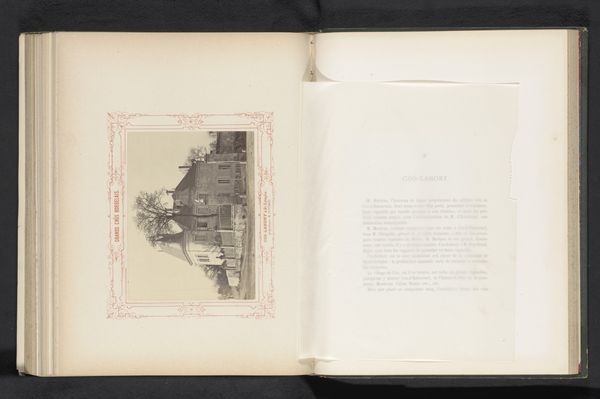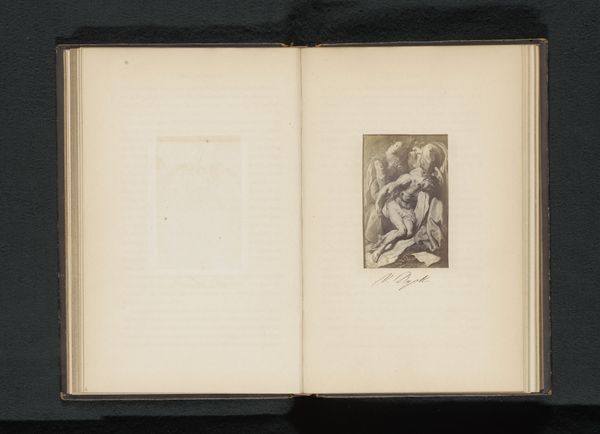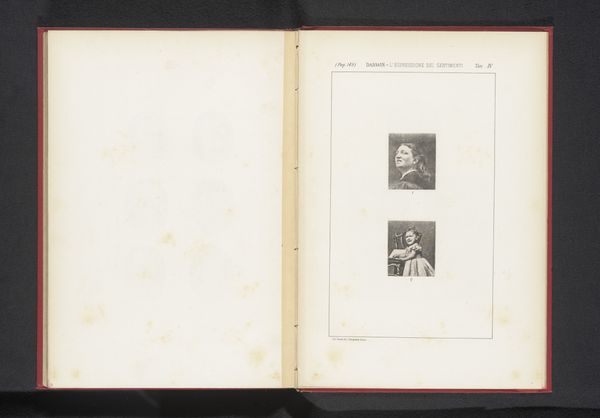
Fotoreproducties van een Maria met kind, mogelijk door Bernardino Luini en een schilderij van Salomo bij de koningin van Seba, mogelijk door Pietro da Cortona before 1866
0:00
0:00
print, paper, photography, albumen-print
#
portrait
# print
#
landscape
#
paper
#
11_renaissance
#
photography
#
italian-renaissance
#
albumen-print
Dimensions: height 227 mm, width 155 mm
Copyright: Rijks Museum: Open Domain
Editor: Here we have a fascinating album leaf dating from before 1866. It presents photographic reproductions of two artworks: a *Maria with Child*, possibly by Bernardino Luini, and a *Salomo with the Queen of Sheba*, potentially by Pietro da Cortona. Both are albumen prints, framed within the page. I find it intriguing how photography is used here, almost as a way to create a portable art gallery. What strikes you about this pairing of images? Curator: It’s fascinating to see how reproductive technologies like photography shape our understanding and access to art. The album itself becomes a curated space, influencing the reception of these Renaissance and Baroque paintings. Considering that this album was compiled before 1866, what might the social or institutional context have been that made creating these reproductions desireable or fashionable? Were they aiming to educate, memorialise, or perhaps profit from wider distribution of artwork images? Editor: That's a great question. It highlights that this isn't just about the original artworks themselves, but the specific cultural value attached to them in the 19th century when this album was compiled. The presence of Italian Renaissance images implies a sense of historical importance perhaps? Curator: Precisely. The act of reproducing and collecting these images reflects a particular taste and cultural project. Think about the grand tour, the rise of art history as a discipline. It indicates the burgeoning public role of art, facilitated by such photographic means, allowing people from different backgrounds access artwork formally sequestered by wealth. So what's your feeling, in your opinion is art truly democratised via this media? Editor: That's a good point about democracy, one hadn't considered that! Reproductions make art more accessible, although not perfectly accessible of course because wealth must still be involved, on some level. These prints allow these paintings to escape, on some level, their original institutional confines. Curator: I agree. Reflecting on the politics of imagery is fundamental to appreciating how photographs participate in cultural narrative, altering perceptions over time. Editor: I hadn't thought about photography that way before. Seeing the cultural context alongside the art gives everything a new meaning!
Comments
No comments
Be the first to comment and join the conversation on the ultimate creative platform.
